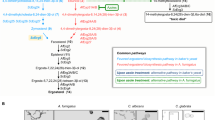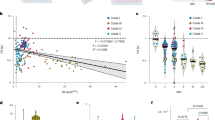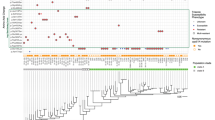Abstract
Aim:
To investigate the action mechanism of a novel chemical structural aminotetralin derivate, 2-Amino-Nonyl-6-Methoxyl-Tetralin Muriate (10b), against Candida albicans (C albicans) in the ergosterol biosynthetic pathway.
Methods:
Antifungal susceptibility test of 10b was carried out using broth microdilution method, the action mechanism of 10b against C albicans was investigated by GC-MS spectrometry and real-time RT-PCR assay, and cytotoxicity of 10b in vitro was assessed by MTS/PMS reduction assay.
Results:
10b reduced the ergosterol content markedly, and the 50% ergosterol content inhibitory concentration (ECIC50 value) was 0.08 μg/mL. Although the sterol composition of 10b-grown cells was completely identical with that of erg24 strain, the content of ergosta-8,14,22-trienol in 10b-grown cells was much higher than that in erg24 strain. Real-time RT-PCR assay revealed a global upregulation of sterol metabolism genes. In addition, the 50% inhibitory concentration (IC50 value) of 10b was 11.30 μg/mL for murine embryonic fibroblasts and 35.70 μg/mL for human normal liver cells.
Conclusion:
10b possessed a mode of action different from that of azoles and morpholines, whose targets were sterol C-14 reductase (encoded by ERG24 gene) and sterol C-5 desaturase (encoded by ERG3) related enzyme. Although 10b seemed to reduce MTS/PMS reduction in a dose dependent manner, IC50 value for mammalian cells was much higher than 50% minimum inhibitory concentration (MIC50) value for C albicans. This indicates that the formulation is preliminarily safe and warrants further study for possible human applications.
Similar content being viewed by others
Log in or create a free account to read this content
Gain free access to this article, as well as selected content from this journal and more on nature.com
or
References
Lemke A, Kiderlen AF, Kayser O . Amphotericin B. Appl Microbiol Biotechnol 2005; 68: 151–62.
Ostrosky-Zeichner L, Marr KA, Rex JH, Cohen SH . Amphotericin B: Time for a new “gold standard”. Clin Infect Dis 2003; 37: 415–25.
Perea S, Lopez-Ribot JL, Wickes BL, Kirkpatrick WR, Dib OP, Bachmann SP, et al. Molecular mechanisms of fluconazole resistance in Candida dubliniensis isolates from human immunodeficiency virus-infected patients with oropharyngeal candidiasis. Antimicrob Agents Chemother 2002; 46: 1695–703.
Ruhnke M, Schmidt-Westhausen A, Morschhauser J . Development of simultaneous resistance to fluconazole in Candida albicans and Candida dubliniensis in a patient with AIDS. J Antimicrob Chemother 2000; 46: 291–5.
Walsh TJ, Viviani MA, Arathoon E, Chiou C, Ghannoum M, Groll AH, et al. New targets and delivery systems for antifungal therapy. Med Mycol 2000; 38: 335–47.
Akins RA . An update on antifungal targets and mechanisms of resistance in Candida albicans. Med Mycol 2005; 42: 285–318.
Baloch RI, Mercer EI . Inhibition of sterol 8–7 isomerase and14-reductase by fenpropimorph, tridemorph, and fenpropidin in cell-free enzyme systems from Saccharomyces cerevisiae. Phytochemistry 1987; 26: 663–8.
Stock I . Antimycotic therapy of Tinea pedis and other foot mycoses. Med Monatsschr Pharm 2008; 31: 247–56.
Oku y, Takahashi N, Yokoyama K . Fungicidal activity of liranaftate against dermatophytes. Nippon Ishinkin Gakkai Zasshi 2009; 50: 9–13.
Schaller M, Borelli C, Berger U, Walker B, Schmidt S, Weindl G, et al. Susceptibility testing of amorolfine, bifonazole and ciclopiroxolamine against Trichophyton rubrum in an in vitro model of dermatophyte nail infection. Med Mycol 2009; 16: 1–6.
Yao B, Ji HT, Cao YB, Zhou Y, Zhu J, Lü J, et al. Synthesis and antifungal activities of novel 2-aminotetralin derivatives. J Med Chem 2007; 50: 5293–300.
Jia N, Arthington-Skaggs B, Lee W, Pierson CA, Lees ND, Eckstein J, et al. Candida albicans sterol C-14 reductase, encoded by the ERG24 gene, as a potential antifungal target site. Antimicrob Agent Chemothe 2002; 46: 947–57.
National Committee for Clinical Laboratory Standards. Reference method for broth dilution antifungal susceptibility testing of yeasts. Approved standard M27–A2. Wayne, Pa; 2002.
Arthington-Skaggs BA, David WW, Christine JM . Quantitation of Candida albicans ergosterol content improves the correlation between in vitro antifungal susceptibility test results and in vivo outcome after fluconazole treatment in a murine model of invasive Candidiasis. Antimicrob Agent Chemother 2000; 44: 2081–93.
Sheng C, Zhu J, Zhang W, Zhang M, Ji H, Song Y, et al. 3D-QSAR and molecular docking studies on benzothiazole derivative as Candida albicans N-myristoyltransferase inhibitors. Eur J Med Chem 2007; 42: 477–86.
Sheng C, Zhang W, Ji H, Zhang M, Song Y, Xu H, et al. Structure-based optimization of azole antifungal agents by CoMFA, CoMSIA, and molecular docking. J Med Chem 2006; 49: 2512–25.
Ji H, Zhang WN, Zhang M, Kudo M, Aoyama Y, Yoshida Y, et al. Structure-based de novo design, synthesis, and biological evaluation of non-azole inhibitors specific for lanosterol 14r-demethylase of fungi. J Med Chem 2003; 46: 474–85.
Zhu J, Lu J, Zhou Y, Li Y, Cheng J, Zheng C . Design, synthesis, and antifungal activities in vitro of novel tetrahydroisoquinoline compounds based on the structure of lanosterol 14alpha-demethylase (CYP51) of fungi. Bioorg Med Chem Lett 2006; 16: 5285–9.
Jin H, McCaffery JM, Grote E . Ergosterol promotes pheromone signaling and plasma membrane fusion in mating yeast. J Cell Biol 2008; 180: 813–26.
Miao L, Nielsen M, Thewalt J, Ipsen JH, Bloom M, Zuckermann MJ, et al. From lanosterol to cholesterol: structural evolution and differential effects on lipid bilayers. J Biophys 2002; 82: 1429–44.
Shrivastava S, Chattopadhyay A . Influence of cholesterol and ergosterol on membrane dynamics using different fluorescent reporter probes. Biochem Biophys Res Commun 2007; 356: 705–710.
De Backer MD, Ilyina T, Ma XJ, Vandoninck S, Luyten WH, Vanden Bossche H, et al. Genomic profiling of the response of Candida albicans to itraconazole treatment using a DNA microarray. Antimicrob Agents Chemother 2001; 45: 1660–70.
Yu L, Zhang WL, Wang LL, Yang J, Liu T, Peng JP, et al. Transcriptional profiles of the response to ketoconazole and amphotericin B in Trichophyton rubrum. Antimicrob Agents Chemother 2007; 51: 144–53.
Dixon G, Scanlon D, Cooper S, Broad P . A reporter gene assay for fungal sterol biosynthesis inhibitors. J Steroid Biochem Mol Biol 1997; 62: 165–7.
Smith CN, Alexander BR . The relative cytotoxicity of personal care preservative systems in Balb/C 3T3 clone A31 embryonic mouse cells and the effect of selected preservative systems upon the toxicity of a standard rinse-off formulation. Toxicology in Vitro 2005; 19: 963–9
Qu XJ, Xia X, Wang YS, Song MJ, Liu LL, Xie YY, et al. Protective effects of Salvia plebeia compound homoplantaginin on hepatocyte injury. Food Chem Toxicol 2009; 47: 1710–5.
Bradbury AJ, Costall B, Naylor RJ . Inhibition and facilitation of motor responding of the mouse by actions of dopamine agonists in the forebrain. Neuropharmacology 1984; 23: 1025–31.
Lejeune F, Newman-Tancredi A, Audinot V, Millan MJ . Interactions of (+)- and (−)-8- and 7-hydroxy-2-(Di-n-propylamino) tetralin at human (h)D3, hD2, and hserotonin 1A receptors and their modulation of the activity of serotoninergic and dopaminergic neurones in rats. J Pharmacol Exp Ther 1997; 280: 1241–9.
Acknowledgements
Project was supported by the National Natural Science Foundation of China (No 30672626 and 30572257).
We thank Dr Joseph HEITMAN for kindly providing the isolate C albicans strain BWP17 and NJ52-1 and Dr William A FONZI for kindly offering the isolate C albicans SC5314 in this study.
Author information
Authors and Affiliations
Corresponding authors
Rights and permissions
About this article
Cite this article
Liang, Rm., Cao, Yb., Fan, Kh. et al. 2-Amino-nonyl-6-methoxyl-tetralin muriate inhibits sterol C-14 reductase in the ergosterol biosynthetic pathway. Acta Pharmacol Sin 30, 1709–1716 (2009). https://doi.org/10.1038/aps.2009.157
Received:
Accepted:
Published:
Issue date:
DOI: https://doi.org/10.1038/aps.2009.157
Keywords
This article is cited by
-
In vitro and in vivo antifungal activities and mechanism of heteropolytungstates against Candida species
Scientific Reports (2017)
-
Transcriptional response of Candida albicans biofilms following exposure to 2-amino-nonyl-6-methoxyl-tetralin muriate
Acta Pharmacologica Sinica (2010)



